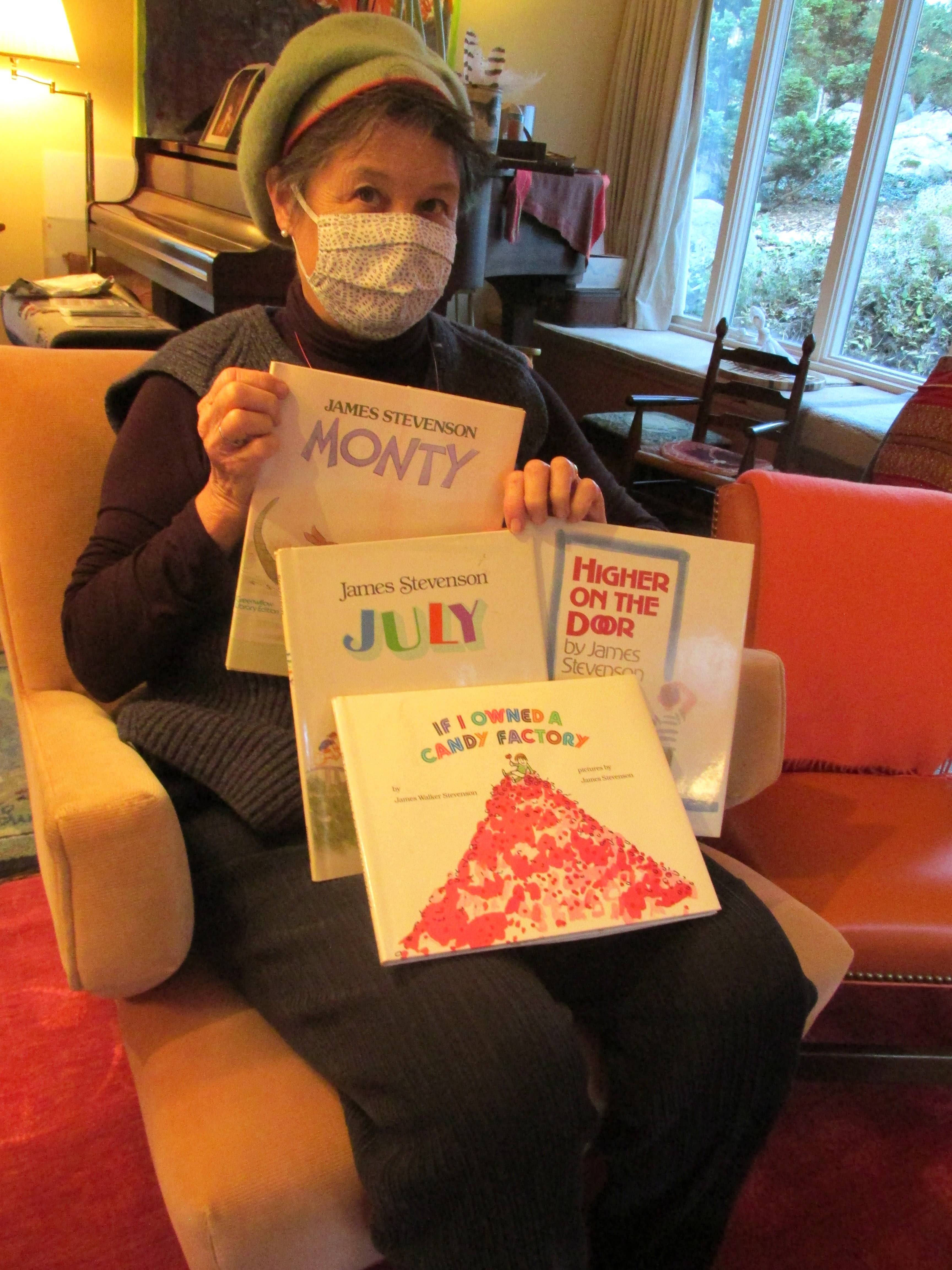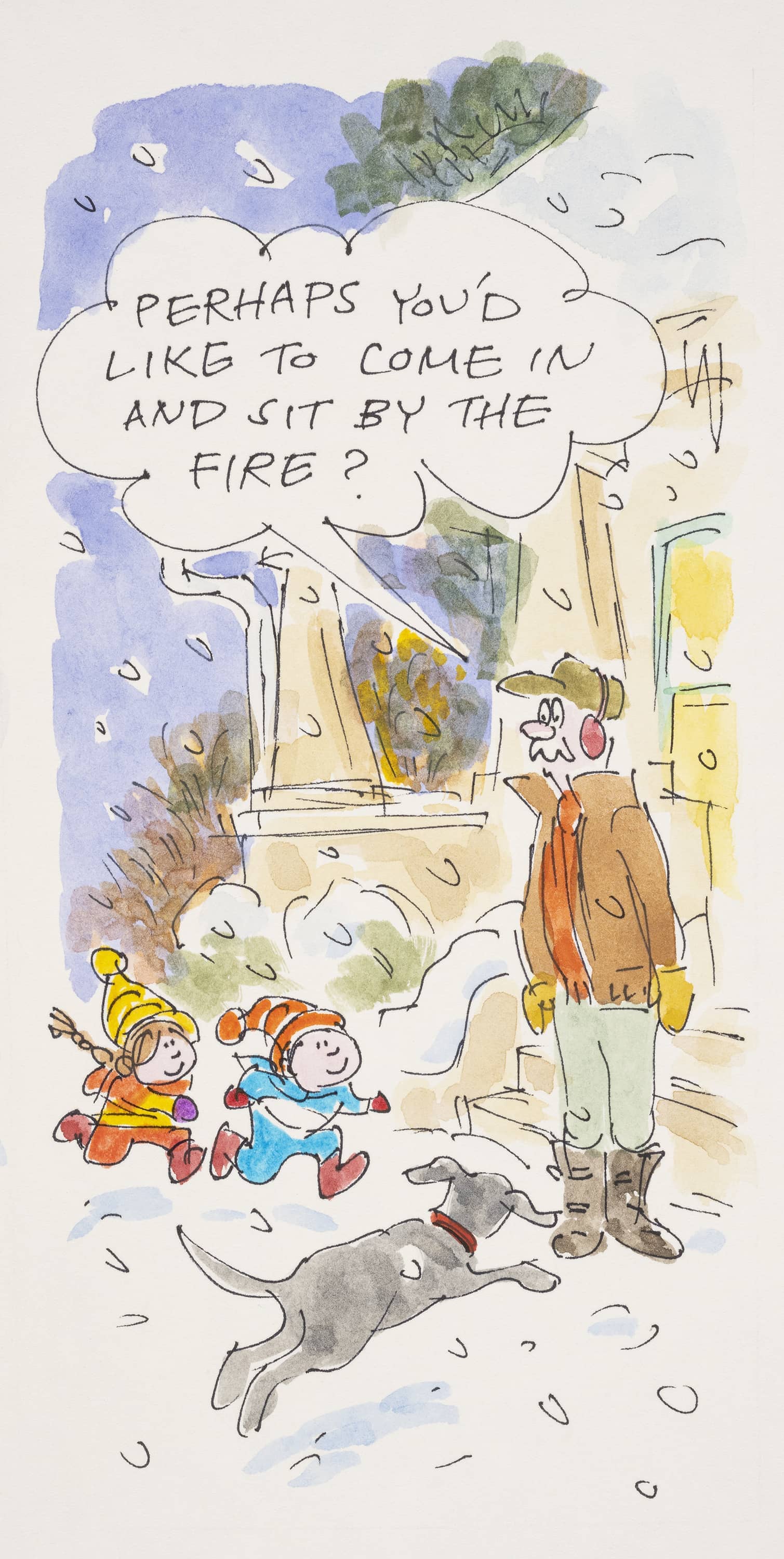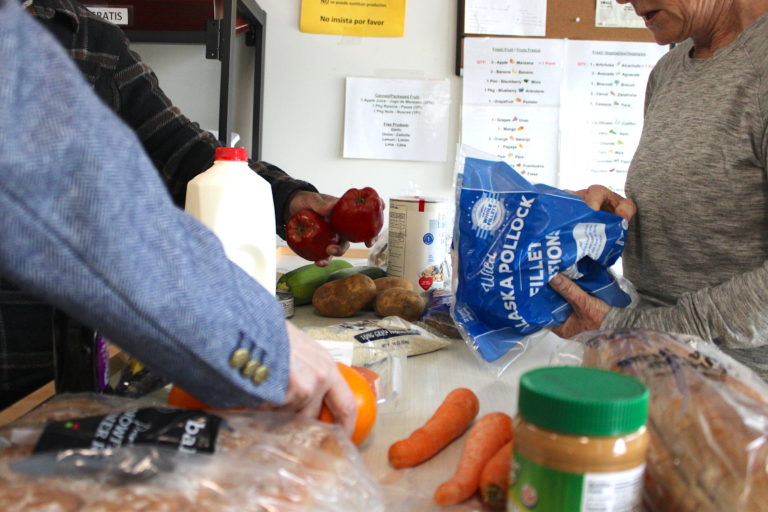

By: Anne W. Semmes
This weekend an exhibit entitled “Fun/No Fun” opens at the Bruce Museum with appeal for children and adults alike. It features the warm-hearted, witty, and humorous work of the late Cos Cob author-artist-illustrator, James Stevenson.
Stevenson’s New Yorker covers and cartoons amused readers for decades, along with his children’s books numbering in the hundreds. In his lifetime, Jim, as he was called, could often be found capturing life of all kinds on Greenwich landscapes with his pen and sketch pad. Luckily, some of his drawings and books are not all locked away with the vast harvest of his work in Yale’s Beinecke Museum due to Covid.
Bruce Museum Curators Kathy Reichenbach and Kathleen Holko were invited by Stevenson’s widow, Josie Merck, to explore the James Stevenson Archives of what has yet to be given to the Beinecke. From that exploration came the theme of what they chose to exhibit. “When we looked at Stevenson’s original work,” says Holko, “we realized that a lot of what he depicted in his children’s books was very much activities and holidays and memories he had related to specific seasons. So, the exhibition is organized by the four seasons – winter, spring, summer, fall.”
They chose the exhibit title, “Fun/No Fun” from one of Stevenson’s autobiographical books. “It just seems to relate so well to Jim as a person,” says Reichenbach, “But then also its the fun things you can do in the seasons and maybe some of the not such fun things to do during the seasons.”
“Stevenson himself was a very funny person,” says Holko, “and that’s really reflected in all of the work he did, not necessarily just his children’s books. What’s wonderful about his children’s books in particular is he did an excellent job with a lot of his characters – taking his adult humor but translating it for children in a way that’s appropriate for them, and for the adults who end up reading these books with children in a way that’s entertaining for them as well.”
Surprising to the curators is the fact that Stevenson grew up without any art education. “It’s pretty amazing,” notes Reichenbach, “for someone who was not formally trained – he’s a self-taught artist – to have such a successful career. His line work is amazing and crisp. There’s also the wonderful autobiographical books which are done in soft watercolor wash with hardly any line work at all.” Add to that the exhibit has, she says, “a few pieces that have never been seen before by the public that are in a different style altogether that’s a little bit more in line with the New Yorker style of cartoon work that he did.”
“When Kathy and I were at the archive looking at the original art,” says Holko, “we were really captured by his handwriting because he does do a lot of hand lettering of the text in his children’s books. We were quite fond of it and I think we purposely selected some pieces just because it really highlighted his hand lettering.”
“He developed his charming lettering,” shares Josie Merck. “Everything was hand lettered by himself.” She tells how the filmmaker of the documentary film, “Stevenson, Lost & Found” had created a font of Stevenson’s familiar handwriting. “It’s as if he’s got his own font anyway.” Merck expects the exhibit to “have done some fun stuff” with that font.
Merck has a theory of what formed her late husband’s sense of humor. “He had trouble in school. So, one of the ways you can adapt and survive is to be funny. And he loved to make people laugh. And it would be his most favorite thing in the world. He was always working on that. You know, it might be a grim nurse or a grumpy doctor, and he would be determined to get them to smile or laugh. Which is a classic way to be. I obviously didn’t see him in school, but I know some of his oldest friends and he had a way to keep people laughing.
“He grew up looking at the New Yorker from the get-go and looking at all those cartoons. He got his office job at the New Yorker when he was in high school, maybe age 16, because it’s a year before he went to college. But in any case, he was a cartoonist for his school newspaper. It was a handy gift he had, and he was determined to be very good at it and he got better and better.”
What long intrigued Merck were his astute observations of “human mannerisms,” she says, “whether it was a walk, or stance, or posture of the classic old man.” An incident stays with her that explains that observant eye. “We were walking on the beach on Block Island… and coming at us, was a character. Oh my gosh, look at that,” she exclaimed. “‘That man is just like one of your old men.’”
That man she says was “Jim’s first boss” he had not seen for perhaps 50 years. “It wasn’t that Jim used him it was just that he had the posture, the way the person walked, he just got it, memorized it, and practiced it.”
“But really,” adds Merck, “Jim’s approach to his children’s books was as if he were a movie maker, which is what he loved. He was really great at getting the different angles of the camera, and swooping in, coming in on a plane and swooping around. So, costumes, casting, sets, directing. That was a passion that would come through in making a children’s book. He would do all the parts.”.
“Fun/No Fun” will be seen in the Museum’s new gallery space, “with ways to get people to interact with the exhibition without actually touching anything,” says Holko. “We are scheduling virtual tours of the exhibition for school groups, and we’re also working on creating a kit that people can pick up, as members of the museum, with activities that they can do related to the exhibition in the kit.”
Holko and Reichenbach are also hoping to show the film, “Stevenson Lost and Found” that gets its name from Stevenson’s long running column on the editorial pages of The New York Times. “We found it to be an immensely helpful documentary,” says Holko, “while we were working on this exhibition, so we are working on a way to show it.”
The “Fun/No Fun” exhibit may just be Act One of the art of James Stevenson. “He was so prolific,” says curator Reichenbach. “There’s so many opportunities in the future for more exhibitions on his work for sure – this is just a jumping off point that we hope will reintroduce James Stevenson and his marvelously funny books to the reading public, and we think it’s something fun for the community, that people can find a little wit and humor, a respite during these dark times.”
The Fun/No Fun exhibit at the Bruce Museum runs from December 13 to April 18, 2021. Two special exhibition previews for Museum members only will be on Friday and Saturday, December 11-12, 9:30 a.m. to 4:30 p.m. To reserve a timed ticket to attend the limited-capacity preview days for members, or to join as a member, visit brucemuseum.org or call 203-869-0376, ext. 311.




